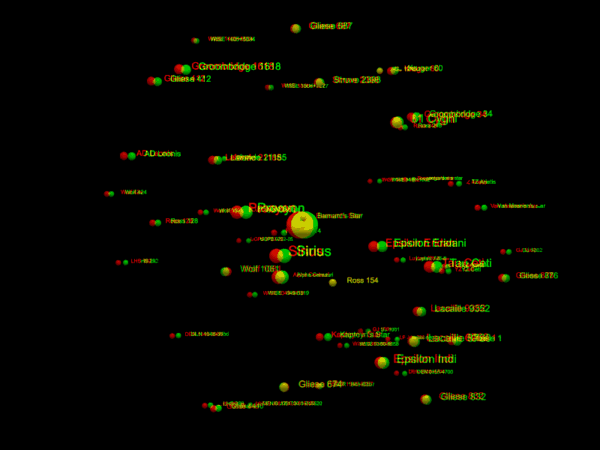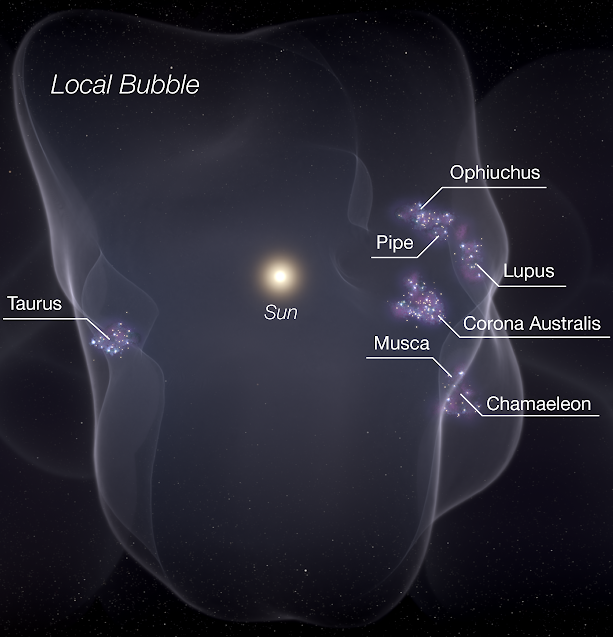|
LHS 292
LHS 292 is a red dwarf in the constellation Sextans. It is far too faint to be seen with the unaided eye and requires a large amateur telescope to be seen visually. It lies relatively close to the Solar System at a distance of about 14.9 light years. It is a flare star, which means it can suddenly increase in brightness for short periods of time. It has the space velocity components = . See also * List of nearest stars This list covers all known stars, brown dwarfs, and sub-brown dwarfs within of the Sun. So far, 131 such objects have been found, of which only 22 are bright enough to be visible without a telescope. The visible light needs to reach or exce ... References Notes External links ARICNS entry Local Bubble M-type main-sequence stars Sextans (constellation) Flare stars 3622 {{var-star-stub ... [...More Info...] [...Related Items...] OR: [Wikipedia] [Google] [Baidu] |
LHS 292 Rendering
The initials LHS are used for: Australia * Leumeah High School, New South Wales * Lyneham High School, Australian Capital Territory United Kingdom * Litherland High School, Liverpool, England * Larbert High School, Stenhousemuir, Scotland United States * Lafayette High School (other) Lafayette High School is the name of many secondary schools in the United States, among them: *Lafayette High School (Alabama), in Lafayette, Alabama *Lafayette High School (Georgia), in Lafayette, Georgia *Lafayette High School (Florida), in Mayo, ... * Lahainaluna High School, Maui Hawai’i * Lamar High School (other) * Lanphier High School, Springfield,IL * Lawrence High School (New Jersey) * Lebanon High School (other) * Lee High School (other) * Legacy High School (other) * Lejeune High School, Jacksonville, North Carolina * Lexington High School (other) * Linganore High School, Frederick Co, Maryland * Lowell High School (other) ... [...More Info...] [...Related Items...] OR: [Wikipedia] [Google] [Baidu] |
List Of Nearest Stars
This list covers all known stars, brown dwarfs, and sub-brown dwarfs within of the Sun. So far, 131 such objects have been found, of which only 22 are bright enough to be visible without a telescope. The visible light needs to reach or exceed the dimmest brightness to be visible to the naked eye from Earth, 6.5 apparent magnitude. The known 131 objects are bound in 94 stellar systems. Of those, 103 are main sequence stars: 80 red dwarfs and 23 "typical" stars having greater mass. Additionally, astronomers have found 6 white dwarfs (stars that have exhausted all fusible hydrogen), 20 brown dwarfs, as well as 2 sub-brown dwarfs: WISE 0855−0714 (probably a rogue planet) and WISE 1741+2553. The closest system is Alpha Centauri, with Proxima Centauri as the closest star in that system, at 4.2465 light-years from Earth. The brightest, most massive and most luminous object among those 131 is Sirius A, which is also the brightest object in Earth's night sky; its white dwarf com ... [...More Info...] [...Related Items...] OR: [Wikipedia] [Google] [Baidu] |
Sextans (constellation)
Sextans is a minor equatorial constellation which was introduced in 1687 by Johannes Hevelius. Its name is Latin for the astronomical sextant, an instrument that Hevelius made frequent use of in his observations. Notable features Sextans as a constellation covers a rather dim, sparse region of the sky. It has only one star above the fifth magnitude, namely α Sextantis at 4.49m. The constellation contains a few double stars, including γ, 35, and 40 Sextantis. There are a few notable variable stars, including β, 25, 23 Sextantis, and LHS 292. NGC 3115, an edge-on lenticular galaxy, is the only noteworthy deep-sky object. It also lies near the ecliptic, which causes the Moon, and some of the planets to occasionally pass through it for brief periods of time. The constellation is the location of the field studied by the COSMOS project, undertaken by the Hubble Space Telescope. Sextans B is a fairly bright dwarf irregular galaxy at magnitude 6.6, 4.3 million lig ... [...More Info...] [...Related Items...] OR: [Wikipedia] [Google] [Baidu] |
M-type Main-sequence Stars
Type M or M type may refer to: Science and technology * Type M, a xD-Picture Card * Type M, a name for the 15 amp BS 546 electrical plug * Vaio Type M, a kind of Vaio computer from Sony * M-type asteroid M-type (aka M-class) asteroids are a spectral class of asteroids which appear to contain higher concentrations of metal phases (e.g. iron-nickel) than other asteroid classes, and are widely thought to be the source of iron meteorites. Definition ... * m-type filter, an electronic filter * M-type star * M-types, an implementation of inductive type Other uses * Audi Type M, a 1920s car * Beretta 92FS Compact Type M, a pistol * MG M-type, a sports car See also * M class (other) * Class M (other) {{disambiguation ... [...More Info...] [...Related Items...] OR: [Wikipedia] [Google] [Baidu] |
Local Bubble
The Local Bubble, or Local Cavity, is a relative cavity in the interstellar medium (ISM) of the Orion Arm in the Milky Way. It contains the closest of celestial neighbours and among others, the Local Interstellar Cloud (which contains the Solar System), the neighbouring G-Cloud, the Ursa Major Moving Group ( the closest stellar moving group) and the Hyades (the nearest open cluster). It is at least 300 light years across, and is defined by its neutral-hydrogen density of about 0.05 atoms/cm3, or approximately one tenth of the average for the ISM in the Milky Way (0.5 atoms/cm3), and one sixth that of the Local Interstellar Cloud (0.3 atoms/cm3). The exceptionally sparse gas of the Local Bubble is the result of supernovae that exploded within the past ten to twenty million years. Geminga, a pulsar in the constellation Gemini, was once thought to be the remnant of a single supernova that created the Local Bubble, but now multiple supernovae in subgroup B1 ... [...More Info...] [...Related Items...] OR: [Wikipedia] [Google] [Baidu] |
Monthly Notices Of The Royal Astronomical Society
''Monthly Notices of the Royal Astronomical Society'' (MNRAS) is a peer-reviewed scientific journal covering research in astronomy and astrophysics. It has been in continuous existence since 1827 and publishes letters and papers reporting original research in relevant fields. Despite the name, the journal is no longer monthly, nor does it carry the notices of the Royal Astronomical Society. History The first issue of MNRAS was published on 9 February 1827 as ''Monthly Notices of the Astronomical Society of London'' and it has been in continuous publication ever since. It took its current name from the second volume, after the Astronomical Society of London became the Royal Astronomical Society (RAS). Until 1960 it carried the monthly notices of the RAS, at which time these were transferred to the newly established ''Quarterly Journal of the Royal Astronomical Society'' (1960–1996) and then to its successor journal ''Astronomy & Geophysics'' (since 1997). Until 1965, MNRAS ... [...More Info...] [...Related Items...] OR: [Wikipedia] [Google] [Baidu] |
The Astrophysical Journal
''The Astrophysical Journal'', often abbreviated ''ApJ'' (pronounced "ap jay") in references and speech, is a peer-reviewed Peer review is the evaluation of work by one or more people with similar competencies as the producers of the work (peers). It functions as a form of self-regulation by qualified members of a profession within the relevant field. Peer review ... scientific journal of astrophysics and astronomy, established in 1895 by American astronomers George Ellery Hale and James Edward Keeler. The journal discontinued its print edition and became an electronic-only journal in 2015. Since 1953 ''The Astrophysical Journal Supplement Series'' (''ApJS'') has been published in conjunction with ''The Astrophysical Journal'', with generally longer articles to supplement the material in the journal. It publishes six volumes per year, with two 280-page issues per volume. ''The Astrophysical Journal Letters'' (''ApJL''), established in 1967 by Subrahmanyan Chandrasekhar as ... [...More Info...] [...Related Items...] OR: [Wikipedia] [Google] [Baidu] |
Georgia State University
Georgia State University (Georgia State, State, or GSU) is a Public university, public research university in Atlanta, Atlanta, Georgia. Founded in 1913, it is one of the University System of Georgia's four research universities. It is also the largest institution of higher education by enrollment based in Georgia and is in the List of United States university campuses by enrollment, top 10 in the nation in number of students with a diverse Majority minority, majority-minority student population of around 54,000 students, including approximately 33,000 undergraduate and graduate students at the main campus downtown. Georgia State is Carnegie Classification of Institutions of Higher Education, classified among "List of research universities in the United States#Universities classified as "R1: Doctoral Universities – Very high research activity", R1: Doctoral Universities – Very High Research Activity". The university's over $200 million in research expenditures for the 2018 f ... [...More Info...] [...Related Items...] OR: [Wikipedia] [Google] [Baidu] |
Space Velocity (astronomy)
In astronomy, stellar kinematics is the observational study or measurement of the kinematics or motions of stars through space. Stellar kinematics encompasses the measurement of stellar velocities in the Milky Way and its satellites as well as the internal kinematics of more distant galaxies. Measurement of the kinematics of stars in different subcomponents of the Milky Way including the thin disk, the thick disk, the bulge, and the stellar halo provides important information about the formation and evolutionary history of our Galaxy. Kinematic measurements can also identify exotic phenomena such as hypervelocity stars escaping from the Milky Way, which are interpreted as the result of gravitational encounters of binary stars with the supermassive black hole at the Galactic Center. Stellar kinematics is related to but distinct from the subject of stellar dynamics, which involves the theoretical study or modeling of the motions of stars under the influence of gravity. Stellar ... [...More Info...] [...Related Items...] OR: [Wikipedia] [Google] [Baidu] |
Sextans
Sextans is a minor celestial equator, equatorial constellation which was introduced in 1687 by Johannes Hevelius. Its name is Latin for the sextant (astronomical), astronomical sextant, an instrument that Hevelius made frequent use of in his observations. Notable features Sextans as a constellation covers a rather dim, sparse region of the sky. It has only one star above the apparent magnitude, fifth magnitude, namely Alpha Sextantis, α Sextantis at 4.49m. The constellation contains a few double stars, including Gamma Sextantis, γ, 35 Sextantis, 35, and 40 Sextantis. There are a few notable variable stars, including Beta Sextantis, β, 25 Sextantis, 25, 23 Sextantis, and LHS 292. NGC 3115, an edge-on lenticular galaxy, is the only noteworthy deep-sky object. It also lies near the ecliptic, which causes the Moon, and some of the planets to occasionally pass through it for brief periods of time. The constellation is the location of the field studied by the Cosmic Evolution Sur ... [...More Info...] [...Related Items...] OR: [Wikipedia] [Google] [Baidu] |
Flare Star
A flare star is a variable star that can undergo unpredictable dramatic increases in brightness for a few minutes. It is believed that the flares on flare stars are analogous to solar flares in that they are due to the magnetic energy stored in the stars' atmospheres. The brightness increase is across the spectrum, from X-rays to radio waves. The first known flare stars ( V1396 Cygni and AT Microscopii) were discovered in 1924. However, the best-known flare star is UV Ceti, first observed to flare in 1948. Today similar flare stars are classified as UV Ceti type variable stars (using the abbreviation UV) in variable star catalogs such as the General Catalogue of Variable Stars. Most flare stars are dim red dwarfs, although recent research indicates that less massive brown dwarfs might also be capable of flaring. The more massive RS Canum Venaticorum variables (RS CVn) are also known to flare, but it is understood that these flares are induced by a companion star in a binary system ... [...More Info...] [...Related Items...] OR: [Wikipedia] [Google] [Baidu] |

